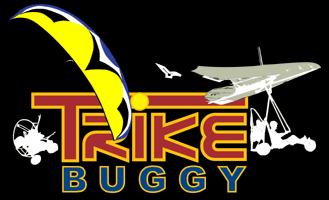 |
 |
 |
 |
 |
 |
 |
 |
 |
 |
 |
 |
 |
 |
 |
 |
 |
 |
 |
 |
 |
 |
 |
 |
 |
 |
 |
 |
 |
 |
 |
 |
 |
 |
 |
 |
 |
 |
 |
 |
 |
 |
 |
 |
 |
 |
 |
 |
 |
 |
 |
 |
 |
 |
 |
 |
 |
 |
 |
 |
Thumper High Altitude TestsI went out to El Mirage and the Flying "J" Ranch this last weekend to fly the Thumper. I wanted to launch and land the machine, maybe a hundred times, and really get a feel for it. I wanted to do some high altitude tests, to see how high it would go and what the climb rates would be at different altitudes. I got there Friday afternoon, and pulled the Thumper out of my shed and gave the key a try. BrBrBRrBrBr, it sounded like a jackhammer as I realized that I should have removed the positive battery lead before I left last time. I pulled my Toyota over near the Thumper and gave her the breath of life. I let the Thumper run for close to an hour, letting her charge the battery up so I had a bit of reserve. The great thing about the Briggs & Stratton motor is that this thing just runs! You simply start it, and it just loves to run. I changed the throttle a few times to 2000 and 3000 RPM, and sometimes I would run it right up to full (at the pitch I had the IvoProp at, it topped out at around 3400 RPM - should have been around 3800), then let her rest at around 1200 idling. Finally, started setting up for a flight. Wrong! Once I got in the air, I could see why the Quicksilver Ultralight pilot looked so amused - it was punchy! On the ground, it was maybe 0-4 mph, seemingly nice conditions, but once in the air it was a different story. I did a few go-arounds and decided that it was a bit much for me and landed uneventfully. I spent the rest of the afternoon installing the Foot Steering, a Reserve Parachute, more velcro for the instruments, getting some more gas and generally tightening everything and preparing for the evening flight. At just before sunset, I launched again, and enjoyed maybe 30 touch & go's before it got so dark I was squinting to see. I was flying the Dudek Synthesis 34 glider, and it worked beautifully with all that Thumper weight (220lbs) dangling from the lines. I trimmed this reflex glider full slow for this flight, and it inflated perfectly everytime (5 inflations) with the A-Assists and was still fast in the air. Looking at the risers, I saw that full slow is actually a bit slower than trim speed, so I set the trimmers at 0 (there's actually numbers on the trimmer) to put the glider at true neutral for the morning flight. Jerry Frost and Pierre Beney arrived this evening, and we spent a good bit of time 'Hangar Flying' around the campfire, watching the moon set along with that planet, really spectacular!
At about 8:30, I launched from the Flying "J" Ranch at approximately 2850 feet and velcro strapped the throttle at full and sat back and relaxed, took pictures, video, and wrote down info at each 1000 feet of altitude. On this first flight, I did not write the time down, but you can see the time on the pictures of the GPS, so it took approximately one hour to climb to 8000 feet and 1:25 to climb to 12,000 feet. I was still climbing at 12000 feet, but very slowly, and I was cold - I didn't wear enough layers to keep out the chill. Plus, I had not pitched the prop for maximum efficiency, at ground level it was only 3400, and it got slower as I climbed. The motor ran beautifully the whole time, not even a hiccup. I am amazed by the four-stroker's incredible reliability. I could get used to this! Trouble is, when I fly a two-stroke again, I'll be wondering when it will happen.... the inevitable motor-out. This motor is made to run, and run, and RUN! I let it idle for a few minutes after I reached 12K, then shut it down for the long glide back down. I really enjoyed the views from up high, there was snow on the nearby peaks near San Bernadino, and I could see all the way to Tehachapi to the north and into the LA basin through the El Cajon Pass. The glide back down turned out to be pretty quick, especially when I let the trimmers out on the Synthesis along with the diving turns I made on the descent. It took about 15 minutes before I was back on the deck! There was some wind at ground level, Pierre reported gusts of up to 12 mph at times, but I landed easily and got the wing down quickly. Here are the results of the climb on the first day:
That afternoon, Pierre and I went for an excellent evening flight out onto the dry lake which had just been opened after the recent rains had kept it closed with standing water for the last three months. People were camped all over the place, and we visited a few camps and did some whooptie-do's for the enjoyment of the motorcycle and quad riders. Lots of touch & go's on the dry lakebed again to get the feel of the Thumper and I'm getting used to the different feel of this heavier PPG Trike. The next morning, I prepared for another high altitude flight, this time wearing a snowmobile suit over everything else I wore the day before for extra warmth. I could barely move, and once I had everything on, I began to get quite warm on the ground! The day was warmer, calmer and looking good. I attached the Synthesis again, and prepped everything for the flight. All the usual suspects from the Flying "J" Ranch were there watching me, Jim Jr, Joey, Supine Jim, Rich, and Pat as I gave the Thumper gas for the inflation. For about 8-10 seconds, the Thumper gave it's all, but the wing just sat there. Suddenly, the right wing tip shot over to the left and I shut it down as quickly as I could. The problem with the 4-stroker is that it takes it awhile to wind down from full throttle. As the wing fell to the left, two of the lines found the propeller and pulled the cage into it, destroying two of the blades and the two lines that wound up on the hub. OUCH! I then realized that the night before, I had let the trimmers all the way out on the way back, and didn't reset them for the launch. Live and learn, it happens. A half hour later, I had changed the prop back to the Ivo, pitched it to 3800 RPM, and hooked up a small Ozone Rush to the Thumper and I was ready to go again. This time, the wing came up beautifully, and off I went. I figured I had enough pictures from the day before, so I didn't take many, just GPS and Vario shots. I didn't even post them, because at 7000 feet, I hit a nasty shear that I spent the next 10 minutes trying to punch through until I became fearful of the turbulence. At 7200 feet, I threw in the towel and glided back down to a beautiful morning and calm air below 6000 feet. The numbers from this flight are below, and you can see that the climb rate is very similar, but the RPM stayed in a better range for the 4-stroker's power band. I think this would have had a better climb at the high altitude if I had not hit the strong upper level winds. The time is from the Chrono readout on the Vario.
Keep in mind that this flight was done on a wing that is 10m smaller than the Synthesis! The Ozone Rush small is only 24m, but a very efficient glider for use with motors. Both wings fly great, and it's often a hard choice for me when setting up. I figured the larger wing would be good for these high altitude tests, but after I broke the two lines on the Synth, I was reluctant to fly it until it's repaired. It was surprising to see that the climb rates for the two wings were almost identical, even better on the smaller wing at the lower altitudes. After my second altitude attempt, I stripped most of my warm gear off and went flying again, enjoying the warmth of the day near the ground. As the day progressed, though, it became increasingly punchy, and soon I was back on the ground. The Thumper is pretty impressive overall, giving the user a sense of confidence that comes from such a reliable power source. Also, because the motor has not been modified in the slightest degree, parts are available anywhere Briggs & Stratton motors are sold. Even so, the motor is literally made to run for THOUSANDS of hours before any kind of rebuild or repair, unlike our little hot 2-stroke paramotors. It was a real joy to fly this machine. We also did some relative thrust tests with different motors and Propellers for anyone that's interested. Keep in mind that these tests are only relative, since the scale, method of attachment (rear axle), and other factors affect the actual readings. This just allows us to compare motors and props on a relative basis on a given day. As you can see, the longer propeller really gets the thrust on the Thumper. Perhaps the Thumper with a different redrive that spins the prop faster would work better with the shorter diameter props. Jerry Frost's Monster really put out some good thrust, the best of these tests.
|

www.TrikeBuggy.com
chad@TrikeBuggy.com
TrikeBuggy, Inc.
Why | Para | Delta | Gallery | Video | Pilots | Innovations | Training | Products | Prices | Sites
All the information and images published in this website are property of TrikeBuggy.com unless stated otherwise.
Reproduction of any part of these contents (info, graphics & pictures) by other website or media is strictly forbidden,
unless specially authorized by TrikeBuggy.com
© TrikeBuggy 2006 – 2025
Please respect the rights and intellectual property of this Web site.
